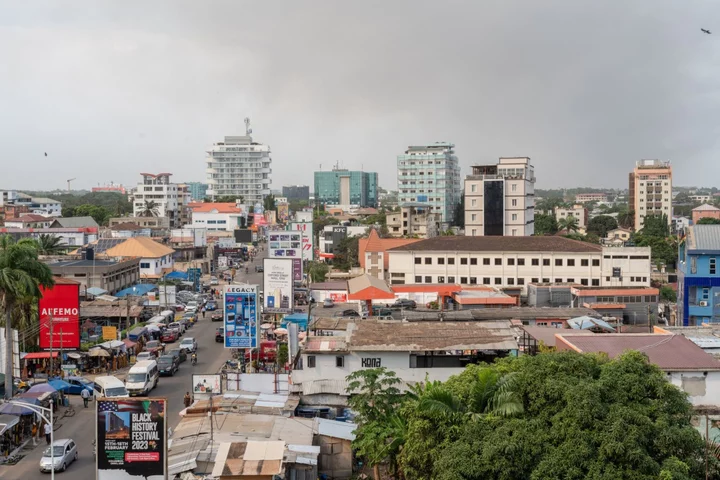(Bloomberg) --
Ghana’s public debt increased by a fifth in just four months, driven partly by the inclusion of short-term loans from the central bank to the state.
Public debt, which excludes state-owned enterprises obligations, rose to 569.3 billion cedis ($49.7 billion) at the end of April, the Bank of Ghana said on its website. The figure was adjusted to include the central bank’s overdraft to the government, which was securitized in December 2022.
The debt figure as of December rose to 473.2 billion cedis after the adjustment, from an earlier estimate of 434.6 billion cedis, according to the central bank’s summary of economic and financial data. Obligations as a ratio of gross domestic product declined to 71.1% in April from 77.5% in December.
Ghana, which defaulted on a eurobond payment earlier this year, is restructuring most of its debt to make it sustainable under a $3 billion International Monetary Fund program, which was approved in May.
The country completed the first part of a domestic debt exchange in February, with investors exchanging 87.8 billion cedis in obligations for new securities that paid as little as 8.35%, versus an average of 19% on the old notes.
Investors also face reduced coupons as restructuring of $1.5 billion domestic dollar bonds and cocoa bills started on July 14. The country is still in talks with local pension funds to revamp their 29 billion-cedi government bond holdings aside ongoing discussions with bilateral and eurobond holders to reorganize obligations.
Below are other macroeconomic and financial updates from the central bank:
- External debt increased to 321.4 billion cedis at the end of April from 240.9 billion cedis in December
- Domestic debt rose to 247.9 billion cedis from 232.3 billion cedis over the period
- Budget deficit in the first five months of the year dropped to 1.8% of GDP from 4.2% a year ago
- The primary balance improved to a deficit of 0.7% of GDP from 1.2% deficit
- Total exports in the first half decreased to $8.2 billion from $8.9 billion y/y
- Imports declined to $6.4 billion from $7.4 billion
- Trade surplus widened to 2.4% of GDP from 2% of GDP
- Gold exports climbed to $3.5 billion from $3 billion
- Cocoa shipments rose to $1.5 billion from $1.4 billion
- Oil shipments dropped to $1.7 billion from $2.8 billion
- Other exports largely unchanged at $1.6 billion
- The current account improved to a surplus of 1.1% of GDP from a deficit of 1.5%
- Overall balance of payment also improved to 0.1% of GDP deficit from 3.4% deficit
- Gross international reserves decreased to $5.3 billion at end-June from $7.7 billion y/y
- Reserves were enough to cover 2.5 months of imports versus 3.4 months cover y/y
- Banks’ annual loans growth slowed to 15.4% in June from 33.3% y/y
- Non-performing loans rose to 18.7% in June from 14.1% a year ago
- Capital adequacy ratio dropped to 14.3% from 19.4%
- Monthly mobile-money transactions increased to 149.4 billion cedis in June from 77.4 billion cedis y/y

